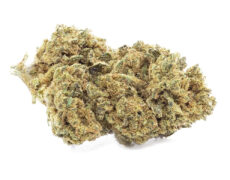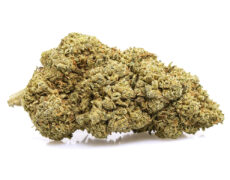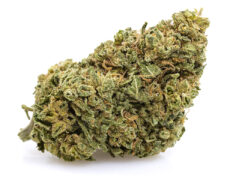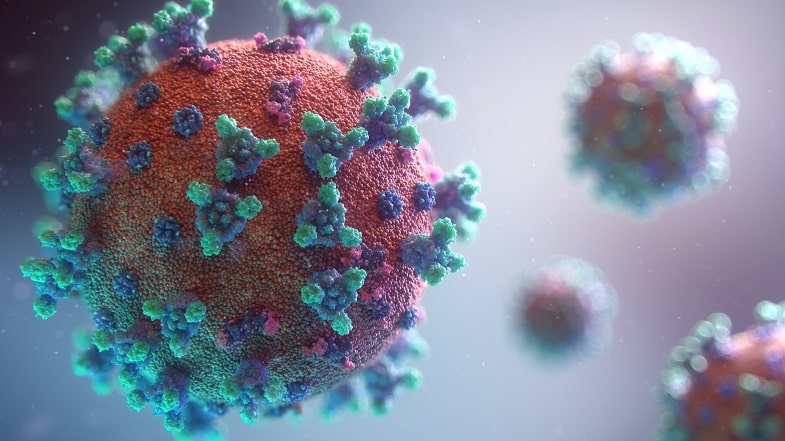Modified on: 17/04/2024
DO CANNABINOIDS TRULY HAVE HEALING POTENTIAL? AND FOR WHICH DISEASES IS THEIR USE RECOMMENDED ?
The use of cannabinoids to treat pain and a wide range of diseases has been the subject of many scientific and medical discussions. On one hand, there is a growing interest in the ability of cannabinoids to provide relief and improve the quality of life for those suffering from debilitating conditions. On the other hand, there are concerns regarding the side effects and long-term safety of a plant like cannabis (even in its legal version, widely debated in Ireland).
In this article, we will explore the world of diseases treatable with medical marijuana, the recommended therapy for each of them, offering various theses and points of view for a complete picture.
-
 SMALL & BIG
SMALL & BIGBUBBLEGUM
Starting from: 1,25CHF/gIndoor | CBD – CBDA <22%
Grams3 5 10 20 50 100 -



DO SI DOS
Starting from: 2,00CHF/gIndoor | CBD – CBDA < 19%
Grams3 5 10 20 50 100 -



ROYAL GG#4
Starting from: 2,30CHF/gIndoor | CBD – CBDA < 40%
Grams3 5 10 20 50 100 -



GORILLA GLUE
Starting from: 2,90CHF/gIndoor | CBD – CBDA < 20%
Grams3 5 10 20 50 100
Cannabinoids Between Scientific Discoveries and Strong State Restrictions
Cannabinoids are chemical compounds found in the cannabis plant. The most well-known of these is delta-9-tetrahydrocannabinol (THC), responsible for the psychoactive effects associated with cannabis use. However, there is another crucial cannabinoid: cannabidiol (CBD), which is devoid of psychoactive effects but has been extensively studied for its therapeutic potential.
Cannabis sativa has a long history as a natural remedy, appreciated since ancient times for its extraordinary therapeutic potential. Its use for its healing virtues dates back to about 6,000 years ago, but over time, it has faced strong resistance. Concerns about abuse and addiction have led to strict restrictions on the use of marijuana and related scientific research. In the 1930s, many states declared marijuana illegal, significantly hindering studies related to its active principles.
Only after the 1950s did researchers begin isolating cannabinoids (including CBD and THC) and terpenes, starting with cannabidiol and later tetrahydrocannabinol, revealing their beneficial potential. The discovery of the endocannabinoid system and how cannabinoids interact with our bodies is more recent and has further expanded our understanding of the therapeutic properties of CBD and other phytocannabinoids.
Among the diseases treatable with medical marijuana, cannabis has been shown to be effective in managing neuropathies and rheumatic diseases, alleviating chronic pain in patients with fibromyalgia, arthritis, and osteoarthritis. It has also been successfully used to mitigate the side effects of cancer therapies and improve the quality of life of AIDS patients. The quality of cannabis derivatives is undeniable, especially considering the reduced incidence of observed side effects. For this reason, we hope that research continues to deepen our knowledge of cannabidiol (CBD), tetrahydrocannabinol (THC), and other cannabinoids and compounds present in cannabis.
What has emerged from various scientific research conducted on the subject in recent years regarding the interaction between cannabinoids and the body, from in vitro studies, clinical trials, and research on animals, is of great scientific value and can have a strong impact on therapies for various types of disorders.


What’s the situation in Ireland ?
In November 2016, the Minister of Health announced the start of a review of the policy regarding the use of cannabis for medical purposes. In this context, she requested the opinion of the HPRA (Health Products Regulatory Authority) on the recent evolution of cannabis use for medical purposes, including available products, research, therapeutic indications and evidence of cannabis effectiveness. An analysis was also sought of the different regulations in the countries that allowed the use of cannabis for medical purposes and of any legislative changes needed to allow the medical use of cannabis in Ireland.
To conduct this review, HPRA has established a Working Group composed of experts in various fields, including neurologists consultants, palliative medicine specialists, psychiatrists consultants specializing in addictions, anesthesiologists and pain specialists, and a pharmacist specializing in palliative care. In addition, the voices of patients were also represented in the Group.
The next report published by HPRA, entitled “Cannabis for Medicinal Use – A Scientific Review,” dated February 2017, recommended that, should it be decided to allow access to cannabis for medical purposes, This should only take place within a continuous, structured clinical process limited to a defined number of well-defined medical conditions. These conditions should have demonstrated their failure to respond to all other treatments previously attempted, and should be supported by at least some modest evidence of the effectiveness of cannabis as a possible therapeutic solution.
In Ireland, prescriptions for medical cannabis can be obtained through the Medical Cannabis Access Programme. This program allows consultants specialized in specific medical conditions to prescribe medicinal cannabis to their patients. Cannabis for medical purposes is only prescribed when other treatments have proved ineffective. To guide consultants, the Health Service provided clinical guidelines.
Access to medical cannabis prescriptions is a relatively recent option in Ireland. However, since its first steps, medical cannabis and associated research have shown the potential therapeutic benefits of cannabis to alleviate the symptoms of patients with different medical conditions.
On 26 June 2019, the Minister of Health initiated a new law that sets in motion the Access to Medical Cannabis Program, which operates on an experimental basis for five years.
This programme aims to simplify access to cannabis products intended for medical use, to treat pain depending on the medical condition, following the existing laws and clinical guidelines in the health system.
The signing of this law marks the beginning of the operation of the experimental program and the first phase involves potential suppliers who may require an assessment to determine whether their cannabis-based products are suitable for medical use within this regime.
Cannabis products will only be included in the list of controlled substances after passing this assessment and being considered suitable for use within the Medical Cannabis Access Programme.
This program allows specialized doctors to prescribe cannabis-based treatments for patients who are under their medical responsibility, but only when conventional treatments have proven ineffective.
To conclude this aside on the specific situation in Ireland, it’s worth noting that as of today, medical marijuana is legal only in certain patient-specific circumstances.
The medical circumstances for which the use of medical cannabis is allowed are:
- Spasticity associated with multiple sclerosis
- Intractable nausea and vomiting associated with chemotherapy
- Severe epilepsy, refractory (resistant to treatment)
And other symptoms related, like chronic inflammation, or rheumatoid arthritis.
Other Effective Uses : CBD in Cosmetics
Several studies have shown that phytocannabinoids can have a positive impact on atopic dermatitis in different ways. Not only do they appear to regulate the inflammatory response, but they also influence the balance of microorganisms on the skin, particularly by acting on Staphylococcus aureus.
Due to its anti-inflammatory properties, CBD (more abundant in legal cannabis) has proven to be an extremely useful topical treatment for inflammatory skin conditions, including acne, psoriasis, and various types of dermatitis.
In fact, it should be noted that when it comes to cosmetics, CBD is an excellent remedy for different skin types. This makes it a valuable ally in the cosmetic industry to address issues such as acne and seborrhea, normalizing the production of skin oils and lipid balance. Once again, the effectiveness appears to stem from CBD’s ability to rebalance the composition of the microorganisms that colonize our skin.
Thanks to cannabinoids, it is possible to alleviate pain, especially neuropathic pain involving the central or peripheral nervous system, address eating disorders, manage some relatively common and disabling psychiatric conditions such as anxiety, depression, and post-traumatic stress disorder. Furthermore, thanks to the Ministry of Health, these substances have been used as effective treatments for some neurodegenerative and neurological diseases, including Parkinson’s disease, Alzheimer’s disease, and ALS.
Let’s now look specifically at how to use marijuana as medicine and treatment, and especially in which diseases it is important and recommended to use them, for proper pain therapy.
Diseases Treatable with medical marijuana: For which diseases is cannabis recommended for therapeutic purposes?
Among the diseases treatable with medical marijuana, we find conditions, more or less severe, based on which a doctor can decide how to treat a patient and for what purpose to use marijuana ; some are not real diseases, while others are extremely complex, such as cancer, and in the latter case, therapeutic cannabis serves a well-being status to combat the pain of certain treatments in some mandatory cases, and we can speak of pain therapy (like nerve pain, or others). Furthermore, based on research and clinical evidence, it is shown that medical cannabis is particularly effective in bladder incontinence, muscle stiffness, spasticity, neuropathic pain, and sleep quality.
Ireland, like many countries, grapples with the complex issue of medical marijuana and its potential benefits in healthcare. The intersection of federal law and medical practices is particularly pronounced when it comes to the use of delta-9 tetrahydrocannabinol (THC), a compound derived from the cannabis sativa plant.
In Ireland, as in other nations, there are ongoing discussions surrounding cannabis-based medicine, its use in medical marijuana programs, and the concerns related to drug abuse. Medical researchers in Ireland have been conducting extensive studies to determine the potential benefits of cannabis-based medicines in treating various conditions, including cancer and refractory neuropathic pain.
The Irish medical community recognizes the potential for cannabis-based medicines to alleviate the symptoms of patients with conditions such as fibromyalgia, Crohn’s disease, and spinal cord injury. While there is growing interest in the medical use of the marijuana plant and its extracts, concerns about recreational marijuana use and smoking marijuana are subjects of debate.
In conclusion, Ireland, like other nations, faces a complex and evolving landscape when it comes to cannabis-based medicine. As research continues and awareness grows about its potential benefits, the Irish healthcare system is carefully considering the role of medical marijuana in the treatment of various medical conditions and the importance of addressing issues related to drug abuse.
Medical marijuana legal
Medical marijuana and cannabis use have become subjects of significant interest among medical researchers in recent years. This interest primarily revolves around their potential to treat a range of medical conditions, from chronic neuropathic pain to cancer treatment. The cannabis sativa plant, commonly known as the marijuana plant, holds promise for managing various health issues, including refractory neuropathic pain and spinal cord injury-related complications.
One area where medical marijuana use has shown promise is in alleviating the symptoms of fibromyalgia patients and individuals with Crohn’s disease. These conditions often lead to chronic pain, and medical marijuana, containing compounds like delta-9-tetrahydrocannabinol (THC), have been explored for their potential in providing relief. For patients dealing with chronic neuropathic pain, such treatments can be a ray of hope.
Weight loss and its relation to cannabis use are also being studied extensively. While recreational marijuana use is widespread, it is essential to differentiate it from medical applications. The use of medical marijuana, which are carefully dosed and monitored, offers a more controlled approach to harness the potential benefits of the cannabis sativa plant. This distinction helps prevent potential issues of drug abuse associated with recreational use.
In summary, the role of medical marijuana in the medical field is expanding, and researchers are exploring their potential in treating cancer, chronic neuropathic pain, and a variety of other symptoms. This ongoing exploration may pave the way for more effective and well-regulated options for patients seeking relief from various medical conditions.
Obesity and Medical Cannabis
The use of cannabis has long been associated with increased appetite and food cravings, primarily due to the action of the CB1 receptor, involved in regulating metabolism and hunger. This has led to the discovery that cannabis not only acts by stimulating appetite but can also be used as a CB1 receptor antagonist to control hunger and body weight.
Many scientific investigations have focused on medical cannabis, such as Rimonabant (marketed as Acomplia), as appetite-suppressing agents. Studies have shown that taking Rimonabant reduced the craving for sweet foods in animals, contributing to significant weight loss in obese subjects. Furthermore, patients who stopped taking the drug and switched to a placebo resumed gaining weight, unlike those who continued treatment. This discovery also indicated that medical cannabis can positively influence food and even tobacco addiction, with potential benefits for cardiovascular health.
Anorexia
Anorexia is a severe symptom often associated with diseases such as cancer, HIV, and AIDS. In many diseases, intervention is necessary to prevent extreme weight loss, which can lead to serious complications or even death. Some studies have investigated the use of marijuana-based drugs, such as dronabinol, to stimulate appetite and counteract wasting syndrome associated with these diseases. Research has shown that taking cannabis-based drugs has helped reduce wasting syndrome, improving nutrient absorption and increasing body weight in patients with HIV and AIDS.
Nausea and Vomiting
Regarding nausea and vomiting caused by chemotherapy, oncology patients often have to deal with these annoying side effects. In this case, cannabinoids such as nabilone and dronabinol have been used for their antiemetic properties. These are diseases for which medical cannabis can be a palliative drug, and thus, we talk about pain therapy. Several scientific reviews have shown that using marijuana can improve the management of chemotherapy-induced nausea and vomiting, offering significant relief compared to conventional treatments.
However, it is important to emphasize that further research is needed to fully understand the effectiveness and safety of using cannabis-based drugs. Despite positive evidence, many clinical trials are still ongoing to determine optimal dosages and fully understand the mechanisms of action of cannabinoids in these clinical situations. It is important to maintain a critical perspective and base treatment decisions on reliable and well-founded scientific data.
Neurological Diseases
Neurological diseases represent one of the most promising areas for marijuana treatment. However, it should be remembered that medical cannabis is not without inefficiency and systemic side effects, like all other molecules. Furthermore, individuals with fragile psychological profiles with compulsive histories and behaviors are an alert in prescription. Caution and meticulous monitoring are therefore necessary.
Here are some theses and viewpoints on neurological diseases that can be treated with cannabinoids:
Multiple Sclerosis (MS): Preliminary studies suggest that CBD may help manage Multiple sclerosis symptoms such as muscle spasticity and pain. However, further research is needed to determine long-term effectiveness. Studies examining the use of marijuana as a treatment for spasticity symptoms in multiple sclerosis have shown improvements reported by patients, although they have not always provided measurable medical data.
Multiple sclerosis is a condition that leads to difficulty in controlling movements, often caused by motor neuron damage. This results in disordered and sometimes uncontrollable muscle movements for those affected.
Scientific evidence on this topic has been collected by researchers such as Whiting in 2015 and Koppel in 2014, leading to similar conclusions: THC-based medications and THC itself have shown anti-spastic properties capable of reducing uncontrolled movements in patients with multiple sclerosis.
In particular, Whiting’s reviews analyzed three studies conducted on patients with multiple sclerosis, and the results showed significant improvement in people treated with cannabis’s active ingredients, such as THC or CBD, compared to those who received a placebo.
Koppel also concluded that taking THC orally seems to be an effective long-term remedy for spasticity in multiple sclerosis, although it may not be as effective in the short term. This suggests that cannabis may have a significant role in improving the quality of life of patients with this neurological condition, although further research is needed to better understand its use and long-term effects.
Epilepsy: The approval of the cannabis-based drug Epidiolex for the treatment of epileptic seizures is a major breakthrough. Many success stories have fueled enthusiasm for the use of marijuana in epilepsy, but questions remain about dosage and long-term safety.
Parkinson’s Disease: Some patients have reported benefits from the use of medical cannabis to treat the symptoms of Parkinson’s disease, such as tremors and muscle stiffness. However, scientific evidence is limited. Patients with Parkinson’s disease also experience resting tremors, difficulty and slowing of movements, and resistance to passive movements. One of the most obvious symptoms lies in the inability to control the initial and final phases of movements.
The cause is attributed to a reduction in dopamine due to a smaller number of cells in the central nervous system. Unfortunately, this is a neurodegenerative condition whose progression cannot be stopped, and the only way to intervene is to contain the symptoms.
Although it may seem like a rare condition, there are a great number of Parkinson’s diagnoses worldwide – approximately 5 million people.
Currently, levodopa-based drugs are used, which, in the long run, lead to the appearance of involuntary movements. Therefore, considering the action of cannabinoids on the endocannabinoid system and the neurological system, investigations have been conducted on the effectiveness of marijuana in Parkinson’s disease.
From the various existing studies, no significant data have been obtained, given the small number of analyzed patients. However, some studies are promising, such as the research conducted in 2004 by Carrol on how cannabis is a valid treatment to reduce dyskinesia caused by levodopa and the investigation conducted by Sieradzan in 2001. Both have concluded that cannabis-based treatments (nabilone) reduce the side effects of levodopa, particularly dyskinesia.
A study limited to 22 patients conducted in 2014 focused on the effectiveness of inhaled marijuana, specifically medical cannabis. The result was a significant reduction in symptoms.
4 Alzheimer’s is a disease that causes dementia and progressive cognitive decline. Initially, it affects memory and language, but over time, it also involves practical functions such as the ability to move and perceive the surrounding environment, greatly limiting the health of affected patients. Its progression often leads many patients to exhibit aggressive behavior, agitation, loss of appetite, and difficulty in control. This neurodegenerative disease is the result of neurological inflammations that cause dysfunction in the brain.
Among the most intriguing studies on this topic are the investigations by María L. de Ceballos, a scientist at the Spanish Cajal Institute of the CSIC, who has dedicated nearly twenty years to understanding these conditions. Already in 2005, one of her research projects highlighted that cannabidiol (CBD) plays a neuroprotective role and inhibits the activation of microglial cells, thereby contributing to preserving the integrity of neurons. The ability of marijuana to protect neurons has been further confirmed by subsequent studies conducted both in vivo and in vitro.
More recent studies have focused on the therapeutic potential of tetrahydrocannabinol (THC) in managing Alzheimer’s symptoms rather than its neuroprotective function. These investigations have focused on how THC can reduce symptoms and prevent the discomfort associated with Alzheimer’s disease.
These results pave the way for further research into the possibility of using therapeutic cannabis to address Alzheimer’s, although it is important to emphasize that research is still ongoing to fully understand how and to what extent marijuana can be used in this complex clinical context.
However, it is important to remember that therapeutic cannabis is different in its use compared to recreational cannabis and should be used with the right methods and precautions and for the right conditions.


Chronic Pain
Chronic pain is a widespread problem affecting millions of people worldwide. Here are some theses and viewpoints regarding therapeutic cannabis in the treatment of chronic pain:
Pain Relief: Cannabinoids, especially CBD, but also THC, are known for their potential to provide pain relief. Some chronic pain patients claim significant benefits from legal marijuana products like CBD oil.
Fewer Side Effects: Compared to some traditional pain medications, marijuana may have fewer severe side effects. This makes it an interesting choice for those who wish to avoid common side effects of medications like opioids.
Personalized Therapy: Variability in individual responses to cannabinoids highlights the importance of customizing therapy. This may involve a “trial and error” approach to finding the right dose and cannabinoid ratio. For some patients, using therapeutic cannabis is somewhat of a last resort to try to manage and control a symptom or a chronic, often refractory, condition in order to improve the patient’s quality of life when other medications have not worked at all.
Mood and Anxiety Disorders: What’s the Purpose of medical marijuana legal?
Mood and anxiety disorders have also been a subject of interest in terms of cannabinoid treatment as alternatives to other medications. Here are some theses and viewpoints on this aspect:
Anxiety: While THC can cause or exacerbate anxiety in some individuals, CBD has been studied for its potential in reducing anxiety. However, results vary and depend on the dose.
Depression: Some preliminary studies suggest that CBD may have antidepressant effects. However, further research is needed to fully understand its role in managing depression.
The idea of examining the efficacy of cannabis in treating depression is based on the hypothesis that cannabinoids may significantly influence mood.
Although the Whiting review we mentioned earlier did not reveal specific studies on therapeutic cannabis in the treatment of depression, several studies have been conducted on other conditions where depression can be a concomitant symptom. These studies have focused on conditions such as post-traumatic stress disorder, chronic pain, and others.
Overall, five studies have been identified that examined the role of cannabis in diseases characterized by depressive symptoms, including chronic pain and multiple sclerosis. During these studies, various substances, including nabilone, dihydrocodeine, and dronabinol, were administered.
However, at present, there is no solid scientific evidence supporting the use of cannabis as an effective therapy for depression. What we primarily have are personal testimonies from patients, but these cannot be considered statistically significant. The question of using cannabinoids in depression management requires further research and investigation to fully understand their effects, potential contraindications, and the best administration methods in this specific clinical context.
Personality and Individual Response: The response to cannabinoids can vary significantly from person to person, which means that effective treatment may require a personalized approach based on genetic profiling and individual sensitivity. Cannabinoids have been found to be useful as they act on pain, muscle spasms, stiffness, mood, and sleep quality. Physiologically, physiological reactions, such as heart rate and blood pressure, have been noted at various times. The results were optimal, leading to a reduction in anxiety about public speaking, difficulties in maintaining a calm and focused speech, and excellent cognitive abilities. In any case, we always recommend not relying on what you read on the internet but speaking with a specialist who will certainly advise you on the right therapy for any diagnosis you may have.
Cancer Treatment and Chemotherapy
The use of cannabinoids in cancer treatment and the management of chemotherapy-related symptoms is a topic of growing interest because even though there are many medicines and drugs for cancer pain that help the patient on a path sometimes to healing, other times they are not enough. In all these cases, cannabis represents an extra opportunity to the point that oncologists and palliative care specialists are required to know and possibly make it available to the patient. Here are some theses and viewpoints on this aspect:
Antitumor: Some preclinical research suggests that cannabinoids could have antitumor properties, but much more research is needed to determine their role in the fight against cancer pain.
Chemotherapy Symptoms: Cannabinoids can provide relief from symptoms associated with chemotherapy, such as nausea and vomiting. This can improve the quality of life in many cancer patients.
Integration with Standard Therapy: Many experts believe that cannabinoids can be used in addition to standard therapy to enhance effectiveness and reduce side effects. However, this idea requires further research and clinical trials.
Pain Therapy: The Healing Potential of medical marijuana
Managing pain is a significant challenge for millions of people worldwide. Chronic pain, in particular, can greatly compromise the quality of life and limit daily activities. In this context, cannabis has increasingly garnered attention as a potential tool for pain therapy. Let’s explore the healing potential of cannabis and how it is influencing the way we approach pain.
Cannabis is composed of hundreds of chemical compounds, but two of them have captured the attention of researchers and healthcare professionals: cannabidiol (CBD) and delta-9-tetrahydrocannabinol (THC). CBD is known for its anti-inflammatory and analgesic properties, while THC is the primary driver of the psychoactive effects of cannabis. Together, these compounds appear to play a key role in pain therapy.
One of the most common ways of using cannabis for therapeutic purposes is through the use of CBD oils or extracts such as Pre Rolled CBD. These products can provide relief from chronic pain without the psychoactive effects associated with THC. However, THC has proven to be effective in managing pain in some cases, especially for neuropathic pain.
Cannabis has been used for centuries as a traditional remedy for pain in many cultures. Today, scientific research is beginning to confirm what many people have experienced for generations: cannabis can be a valuable ally in pain management. Preliminary studies suggest that cannabis can be effective in treating pain associated with conditions such as arthritis, multiple sclerosis, fibromyalgia, and even cancer-related pain.
However, it is important to note that the use of cannabis for pain should be done under the supervision of a healthcare professional. Dosages and methods of administration can vary from person to person, and there are some important considerations to keep in mind, such as the potential for side effects and interactions with other medications.
In conclusion, cannabis is emerging as a promising option for pain therapy, offering an alternative path for those struggling with chronic pain. However, it is essential to consult with a healthcare professional before embarking on any form of cannabis therapy for pain to ensure that it is safe and effective for your specific needs. Research continues in this field and may lead to new discoveries and treatment options in the future.
Conclusions
The use of cannabinoids in the treatment of various diseases (as we have seen in Tourette’s syndrome, cancer, anorexia) offers significant promises in many cases but also raises numerous questions. It is fundamentally important to remember that the effectiveness of cannabinoids can vary significantly from person to person, and results can depend on the dosage, the ratio of cannabinoids, and the specific disease being treated.
While some theses emphasize the potential healing properties of cannabinoids, others caution about side effects, long-term safety, and the need for further research. Regulation and access to cannabinoids vary from country to country, making the topic even more complex, even when it comes to treatable diseases with cannabinoids.
In conclusion, the world of cannabinoids (including THC and CBD) and treatable diseases is still evolving. Research remains essential to fully understand their therapeutic potential and to ensure their safe and effective use in the medical context.
In this article, we wanted to explore all the uses of therapeutic cannabis and how this powerful natural herb is truly effective not only for treating complex disorders and diseases but also for simpler reasons for which a diagnosis is not required, such as improving sleep quality.
However, we want to remind you that we are not specialized doctors, and the article was written from a purely informative standpoint; therefore, if you have specific needs, consult with your trusted physician.
If you want to learn more about the wonderful world of cannabis, read the other articles on the blog and discover everything about CBD and its derivative products such as hashish or CBD flowers.






